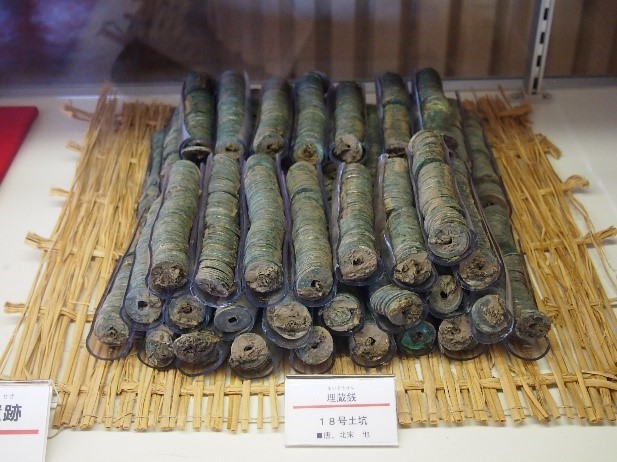Archaeologists have unearthed a substantial trove of more than 100,000 ancient coins at a construction site of a factory in Maebashi, a city in Central Japan located about 60 miles Northwest of Tokyo, according to Maebashi City Government officials.
As reported by the national publication Asahi Shimbun, the coins are thought to be over 2,000 years old and are of Chinese origin. 1,060 bundles of coins were found, with 100 pieces each, tied together using straw rope. However, only 334 out of the total coins have been inspected so far.
In the current batch that was examined, the oldest coin was discovered to have been engraved with Chinese letterings translated into "Ban Liang" accompanied by a hole in the middle. These "Ban Liang" coins are considered to be the first coins to be produced in a unified China.

MAEBASHI, JAPAN - NOVEMBER: The examined bundles of ancient coins exhibited in the "Newly Excavated Cultural Properties Exhibition 2023" held at the National Important Cultural Property "Rinkokaku" from October 31st to November 12th, thought to be "Ban Liang" coins, dug out from the Maebashi construction site in central Japan.
Why Were the Ancient 'Ban Liang' Coins Buried in the Maebashi Site?
Archeologists surmised that the coins may have been buried in a rush, deduced from the fact that the burial site was located near the residential area of very important people in medieval Japan. One possibility is that war may have been happening at the time, hence the rush.
The newer coins within the examined batch were dated, one of which was linked to 1265 at the latest. This led the archeologists to believe that the bundles were buried during the "Kamakura Period" between 1185 to 1333. However, the presumed days are still open to change after more coins are inspected.
In addition, the burial site also yielded a large number of other ancient artifacts leading scientists to assume that the area used to be a central part of the Kozuke province, the predecessor to modern-day Gunma Prefecture during the "Burial Mound Period" or "Kofun Period," that existed between the 3rd-Century to 7th-Century.



